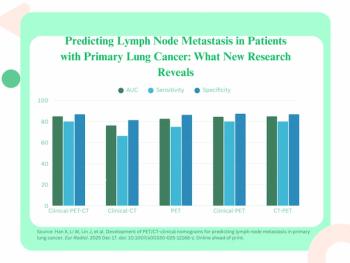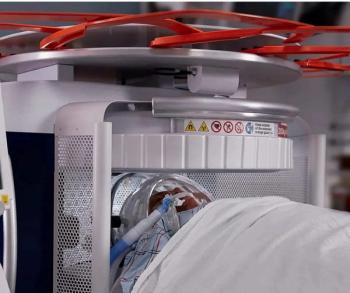
PET/MR for Bladder Cancer: UNC Investigates
Could PET/MR be a better modality than conventional MR and CT for bladder cancer?
Interest in clinical applications for PET/MR continues to mount, and now researchers at the University of North Carolina School of Medicine are studying its use for bladder cancer staging.
Researchers at UNC’s Lineberger Comprehensive Cancer Center, Department of Radiology, and Biomedical Research Imaging Center are conducting a pilot study to evaluate PET/MR for staging patients with muscle invasive bladder cancer, which represents about a quarter of bladder cancer patients.
“We are interested in understanding whether PET/MR may be a better modality for detecting lymph node involvement” in these patients, said Matthew Milowsky, MD, principal investigator of bladder cancer staging project and a medical oncologist and associate professor of medicine at UNC Chapel Hill.
Conventional MR and CT are the standard of care, but their accuracy is poor in these cases. The reported sensitivity for detection of lymph node metastases is 50 percent for MR and overall accuracy is 50 percent to 60 percent for CT, Milowsky said. PET/MR might offer better soft tissue characterization and anatomical information plus functional molecular imaging, he said.
Thirty patients with muscle invasive bladder cancer are enrolled in the study. Prior to surgery, each patient undergoes conventional imaging with CT and a PET/MR scan with the Biograph mMR PET/MR system from Siemens Healthcare. The pathology from the standard of care lymph node dissection is used as the gold standard to evaluate the accuracy of PET/MR. “We will be able to see whether or not we can predict the presence of lymph node involvement,” Milowsky said.
Although it’s too early in the study to speculate on whether PET/MR is a better modality, Milowsky said “that’s the hypothesis and we are excited.”
Arif Sheikh, MD, assistant professor of radiology, nuclear medicine, at UNC, noted a growing interest in understanding the molecular characteristics of cancer, as well as finding the extent of the cancer. Though PET and MR each have their shortcomings, the combined modality may offer enough information to improve sensitivity and specificity, he said. “This is a marriage of the best two strengths in imaging to stage the patient with bladder cancer.”
The Biograph mMR PET/MR system received FDA approval in 2011, and researchers and clinicians continue to build data to demonstrate PET/MR’s advantages. Because it’s a new technology, the benefits have yet to be fully proven in bladder cancer, Milowsky said.
[[{"type":"media","view_mode":"media_crop","fid":"23564","attributes":{"alt":"","class":"media-image media-image-right","id":"media_crop_9741771360995","media_crop_h":"0","media_crop_image_style":"-1","media_crop_instance":"1889","media_crop_rotate":"0","media_crop_scale_h":"0","media_crop_scale_w":"0","media_crop_w":"0","media_crop_x":"0","media_crop_y":"0","style":"height: 191px; width: 400px; border-width: 0px; border-style: solid; margin: 1px; float: right;","title":" ","typeof":"foaf:Image"}}]]
The technology is being reimbursed for both the PET and MRI portions when each exam is medically necessary and clinically indicated. In the case of bladder cancer, this pertains to the use of PET and MR during pretreatment staging.
A challenge for UNC with the new modality is the lack of cross-trained technologists, according to Weili Lin, PhD, director of the Biomedical Research Imaging Center, who is leading the implementation and current research. Training for the PET and MR technologists - which includes adjusting the work flow and learning the software - took some time. For the interpreting physicians, new software must be used to view the studies due to complexities that are not experienced with traditional PET/CT imaging or even with the fusion of PET and MRI studies. This training will continue to be refined once the needs become more clearly defined, researchers said.
Joseph K.T. Lee, MD, a radiology professor in abdominal imaging and former chair of the department of radiology at UNC, credited his institution’s organization and team approach for making the program run smoothly. Every research project is led either by a clinician or a radiologist, said Lee, “and we have nuclear medicine physicians and radiologists and technologists working together. Without this organized team approach, there would be no way we could advance a new modality like PET/MR systematically.”
Milowsky agreed. “Any good medicine we know these days is characterized by a multidisciplinary effort. I think UNC has done a tremendous job in fostering a culture of collaboration and collegiality.”
Newsletter
Stay at the forefront of radiology with the Diagnostic Imaging newsletter, delivering the latest news, clinical insights, and imaging advancements for today’s radiologists.



























